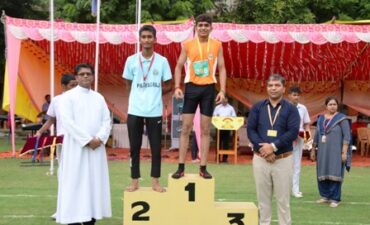New Delhi, 2 September: If degraded lands have to be saved embedding research within farmer-focused development initiatives is essential, echoed scientists on the sidelines of the 14th Conference of Parties to theUN Convention to Combat Desertificationhere on Monday. They cited successful land restoration initiatives in Africa and India to make the point.
“To stop land degradation and reverse it to be able to achieve the SDGs, especially combatting desertification and restoring degraded lands (SDG 15.3), a synergy is required betweenscientists, farming communities and their institutions that are the land users and managers. Research can help restoration initiatives to scale-up globally but only if farmers, their livelihoods and communities are at the heart of such initiatives,” said Prof Anthony Whitbread, Director for the Innovation Systems for the Drylands research program at the International Crops Research Institute for the Semi-Arid Tropics (ICRISAT), during the session ‘Applying the Research in Development Approach to Scale Land Restoration and Achieve the LDN targets’.The event was organized by ICRISAT and World Agroforestry (ICRAF).
The SDG 15.3, as envisioned by the UN, reads – By 2030, combat desertification, restore degraded land and soil, including land affected by desertification, drought and floods, and strive to achieve a land degradation-neutral world. This target, which drives land restoration initiatives that were presented at the session, bridges with the UNCCD through the scientific conceptual framework of Land Degradation Neutrality (LDN). “Restoring degraded lands for food security is critically important in sub-Saharan Africa given the extent of degradation and socio-economic conditions in the region. With climate change only exacerbating degradation, collaboration between institutions of science, development actors, governments and farmers is a pressing need,” said Dr Leigh Winoweicki, a Soil Systems Scientist at the World Agroforestry (ICRAF). Dr Winoweicki’s work that was presented at the session had resulted in creation of ‘Communities of Practice’ in Africa. These communities are platforms for stakeholders with common goals to share lessons learnt and create knowledge for an enabling environment to accelerate impact on the ground. In India, development and management of watersheds have helped reclaim degraded lands. The Parasai-Sindh watershed in India’s Uttar Pradesh state, developed by ICRISAT and partners from Indian Council of Agricultural Research (ICAR), has been held up as a model for increasing land productivity by the National Institute for Transforming India (NITI Aayog).“Integrated watershed development involving agroforestry helps to control erosion and enable farmers to achieve food and economic security. It is important in the context of increasing dependence of Indian agriculture on groundwater,” said Dr Kaushal Garg, a Natural Resources Management Scientist at ICRISAT. Dr Garg presented the Parasai-Sindh watershed which helped increase area under cultivation, crop and milk yields and triple farm household incomes in Jhansi. The government of Uttar Pradesh is attempting to double farmers’ income in seven districts of the state’sBundelkhand region with ICAR and ICRISAT’s assistance.







